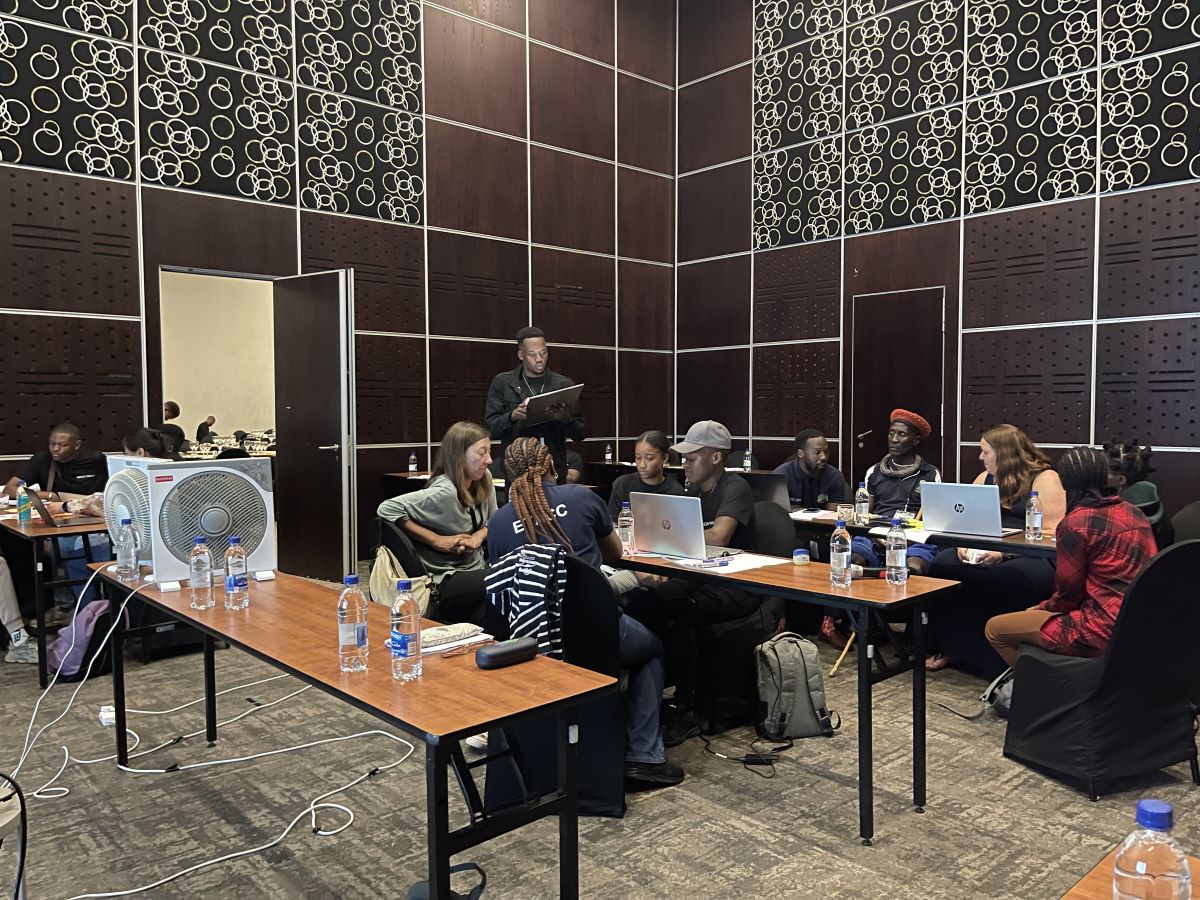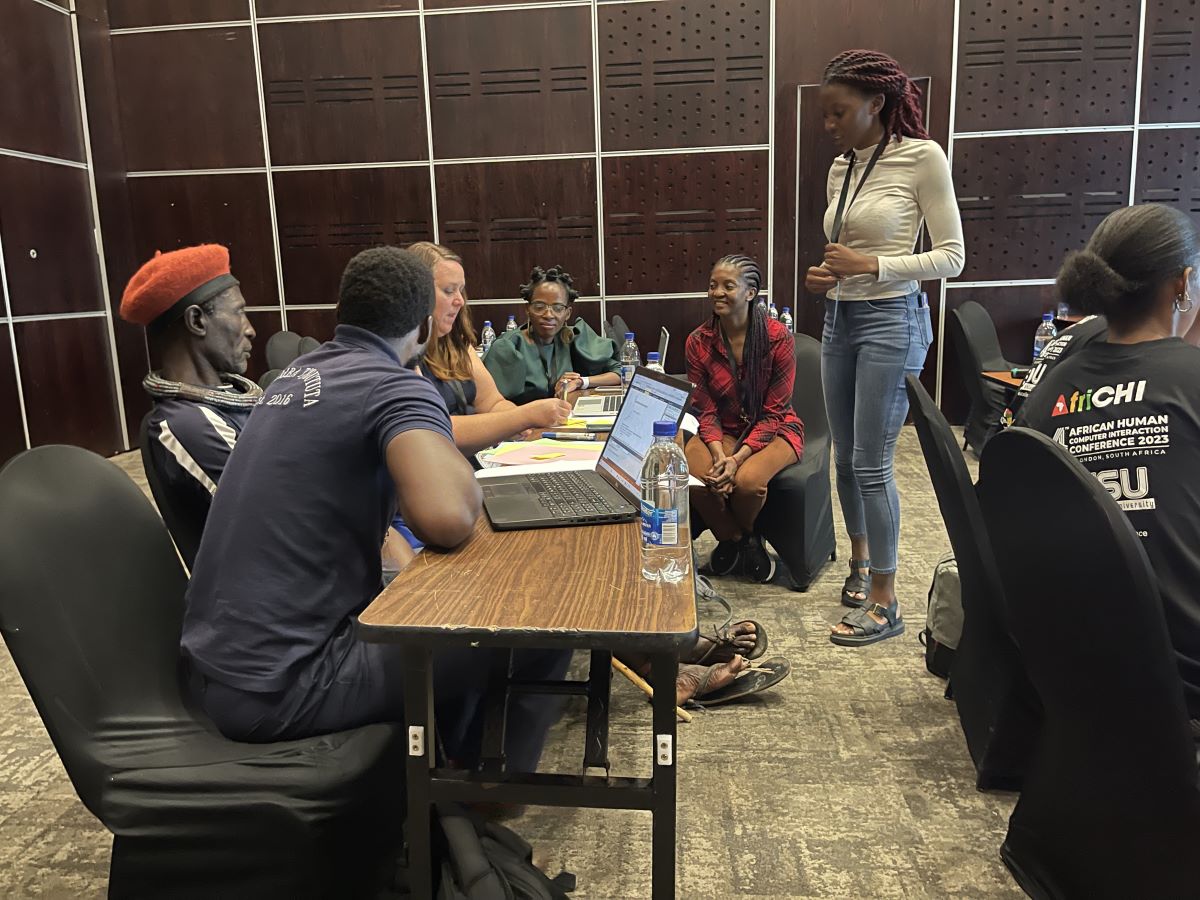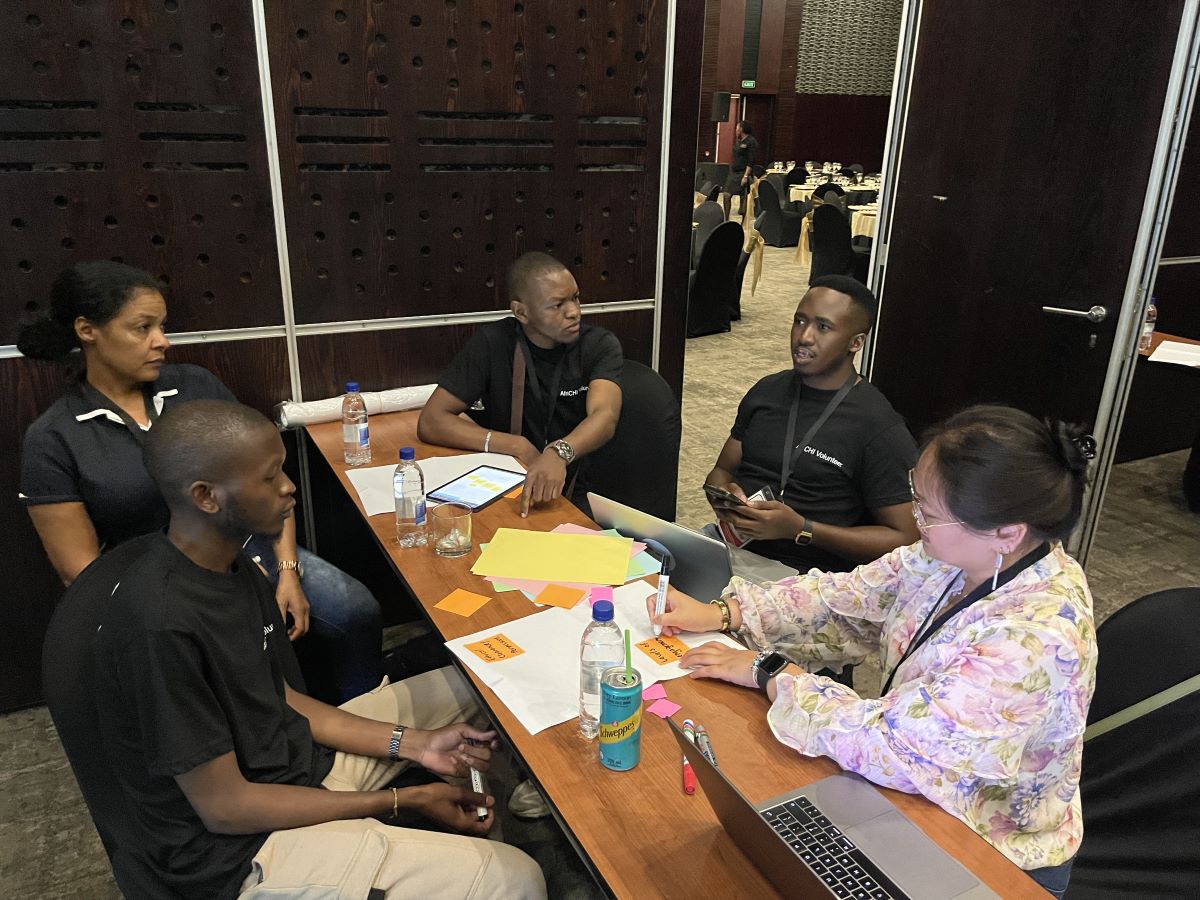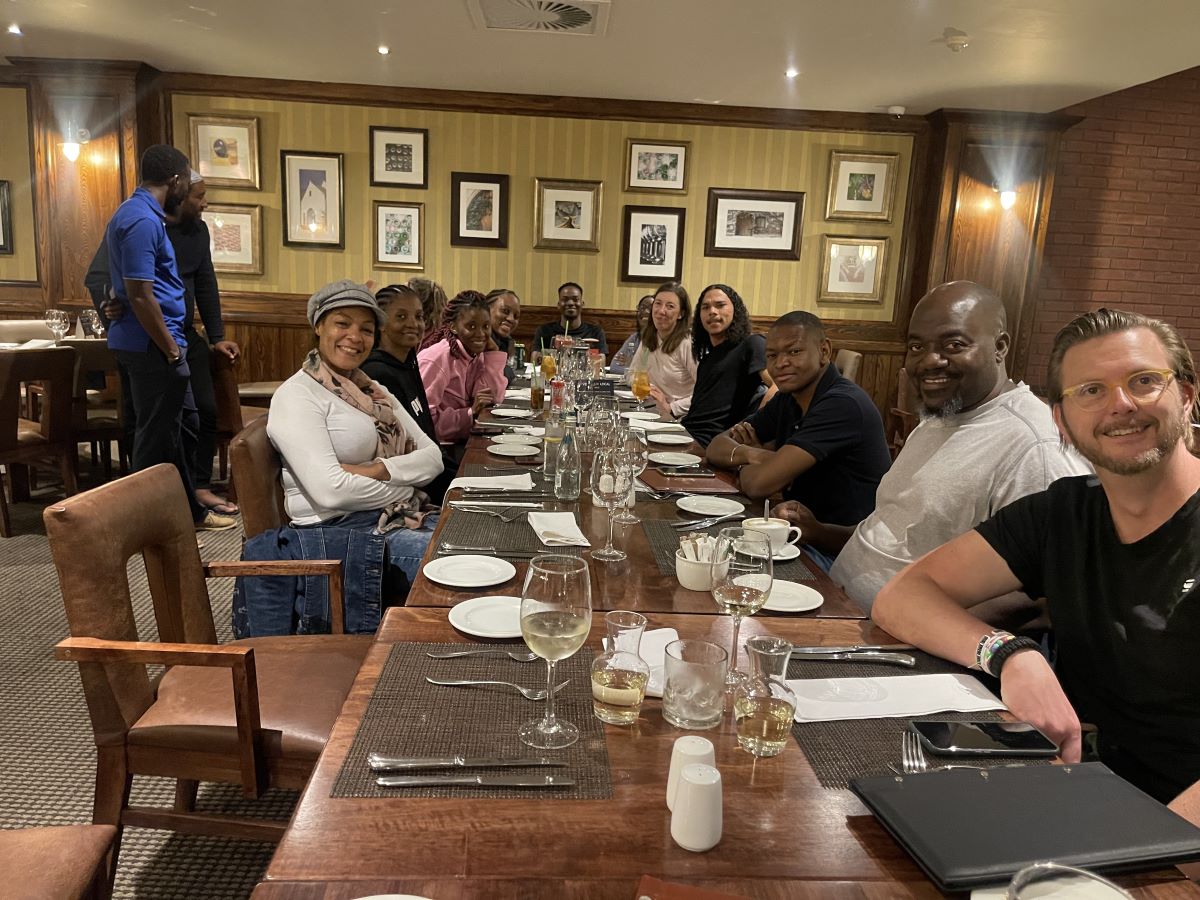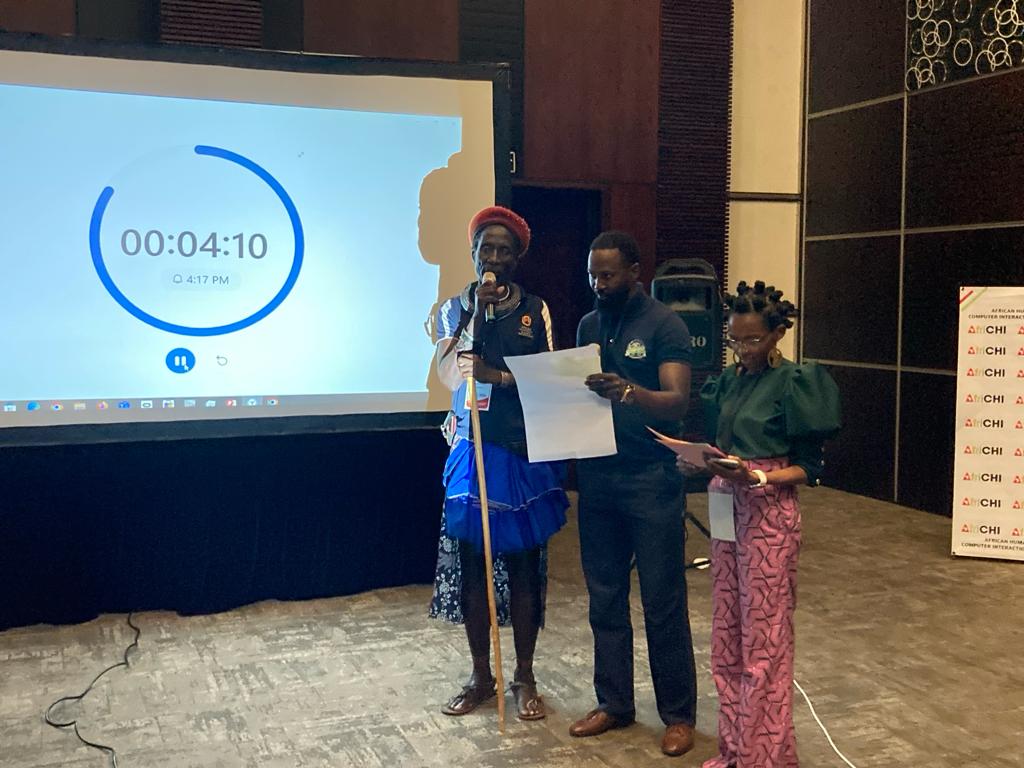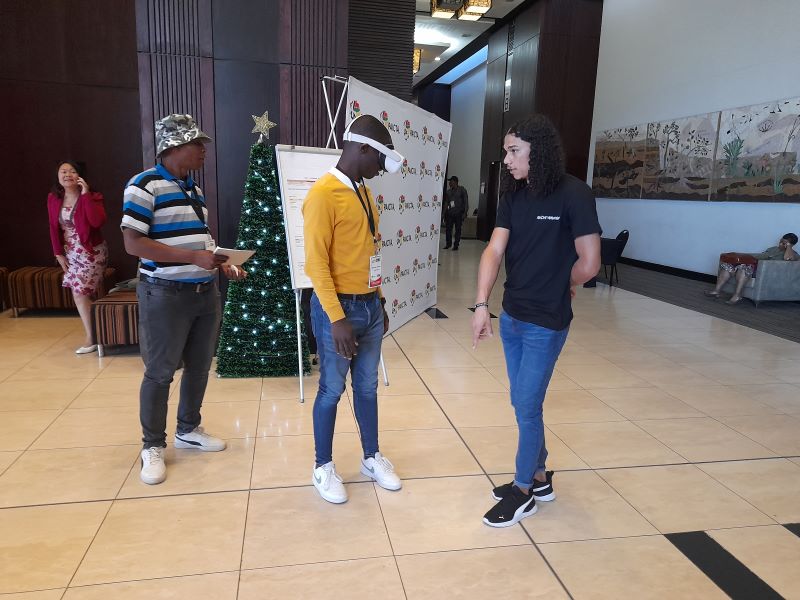AfriCHI 2023: 4th African Human Computer Interaction Conference
AfriCHI’23 was organised by a pan-African team, in cooperation with the Association of Computer Machinery’s Special Interest Group for Computer Human Interaction, ACM SIGCHI. The primary goal was to develop and sustain a unified body and local expertise for Human-Computer Interaction (HCI) and Interaction Design (IxD) in Africa. AfriCHI aimed to broaden international participation of Africans in the practice and study of HCI and Interaction Design, advancing HCI by increasing awareness of designs, tools, inventions, methods, theories, and pedagogies for creating or using technology in Africa. Participants included interaction designers, user experience (UX) practitioners, information architects, software engineers, human factors experts, information systems analysts, and social scientists.
The Cluster hosted three Workshops hosted by Muashekele Chris , Winschiers -Theophilus Heike titled What if…. Fabulating African HCI Future’s within the Veil of HCI, which focused on how knowledge is created, legitimized, and circulated, emphasizing the role of power dynamics. Unlike traditional formats, this workshop encouraged collaborative interaction and avoided a hierarchical structure. It aimed to promote nuanced discussions about HCI knowledge production and dissemination practices, challenging disciplinary boundaries and fostering inclusivity.
Another Workshop was the: Exploring Ethics and Community Interaction Protocols whereby Kapuire, Gereon Koch; Maasz, Donovan; Stanley, Colin; Mbinge, Uariaike; Koruhama, Alphons Kahuhu; Kandjengo Shorty which focused on ethical co-design practices with indigenous communities, aiming to overcome communication barriers and develop a Rural Community Engagement Framework. Led by experienced facilitators, it employed mixed-method methodologies to encourage discussions on co-facilitation and co-publishing. The goal was to empower participants to integrate culturally sensitive strategies into their engagements, promoting meaningful co-design collaborations and transformative impact within Afrocentric research contexts.
The third workshop was hosted by : Itenge, Helvi; Kays, Rosetha; Auala, Selma; Chivuno-Kuria, Shilumbe; Peter, Kaulyaalalwa Peter; Makosa, Isaac titled Co-Designing Technologies with Children which aimed to gather researchers and stakeholders involved in co-designing technologies with children to share experiences, tools, and methodologies, as well as to address challenges encountered. Participants collaborated to improve strategies for global co-design with children, focusing on fostering empathy, meaningful participation, and innovative tools. Through face-to-face interaction and the use of Jamboard, they discussed challenges and developed strategic solutions in teams. The workshop aimed to establish collaboration links for exchanging techniques, resources, and initiating new global initiatives in child-centric technology design.
The cluster also presented Full Papers titled A community-Based Exploration Into Gesture driven Locomotion Control in Virtual Reality presented by Auala, Selma; which explored gesture-based control in virtual reality applications, focusing on the challenge of implementing actions like locomotion. Through an exploratory study with a rural community in Southern Africa, researchers conducted gesture elicitation sessions to inform the design of locomotion control gestures. The findings will guide application-specific implementations and further research to ensure user approval and minimize cybersickness.
Another paper was the Infusing Futuring into Community-based Co-design: A Pathway to Innovative Technology Design with Indigenous Communities in Africa presented by Muashekele, Chris which advocates for integrating community-based co-design and futuring as an approach for innovative technology development in rural indigenous settings in Africa. Drawing on theoretical foundations and empirical projects in Namibia, which involved co-designing a digital wildlife data collection tool and futuring rural green energy use, the paper highlights the strengths and limitations of each approach. It proposes a collective alliance that transcends individual application, aiming to enable technology innovation tailored to the needs of rural indigenous communities.
The final paper was presented by Mukumbira, Sebastian titled Developing an ethnobotanical application with and for Ovahimba communities which addresses the decline of orally transmitted ethnobotanical knowledge by digitally preserving it. Existing databases often lack direct involvement from indigenous communities and may misinterpret or inaccurately represent their knowledge. The project's main objective is to develop a mobile ethnographic app in collaboration with the Kunene indigenous communities, enabling them to collect and curate their traditional plant knowledge. Through community-based co-design and iterative prototyping, the app empowers communities to safeguard and share their knowledge with external entities, ensuring its authenticity and accuracy.
The cluster Demoed the Let’s dance /Hi//Ka//Kusi with non-player character Ju/'Hoansi women in Virtual Reality which introduces a Virtual Reality (VR) implementation of the traditional Ju/’Hoansi dance, /Hi//ka//kusi, which celebrates rain, food, and prosperity. Typically performed by women in the community, the dance involves forming a circle and throwing a !nara melon among participants. In response to a request from the Donkerbos community, the researchers recorded a demonstration of the dance and translated it into 3D graphics and animations for VR. The application, compatible with Oculus Quest 2, immerses users in the dance, allowing them to participate in catching and throwing while interacting with virtual Ju/’Hoansi women. Feedback from the community confirms the VR experience accurately represents their culture, demonstrating the potential of such projects in preserving cultural heritage practices.

